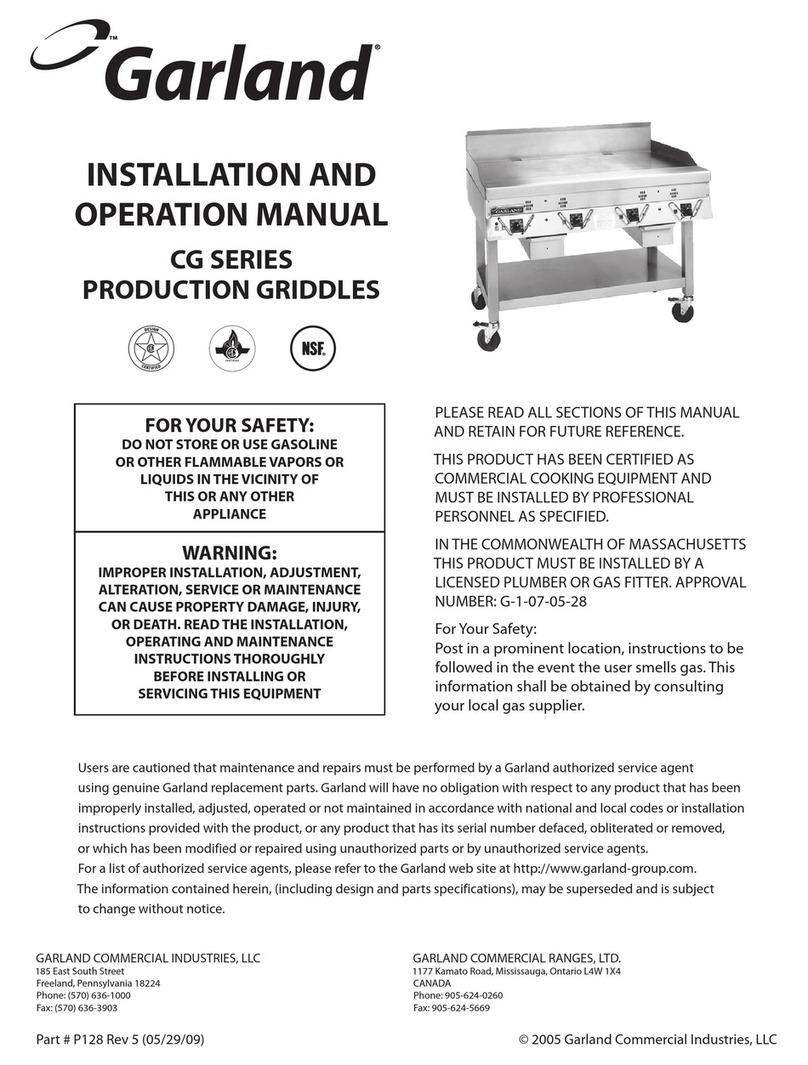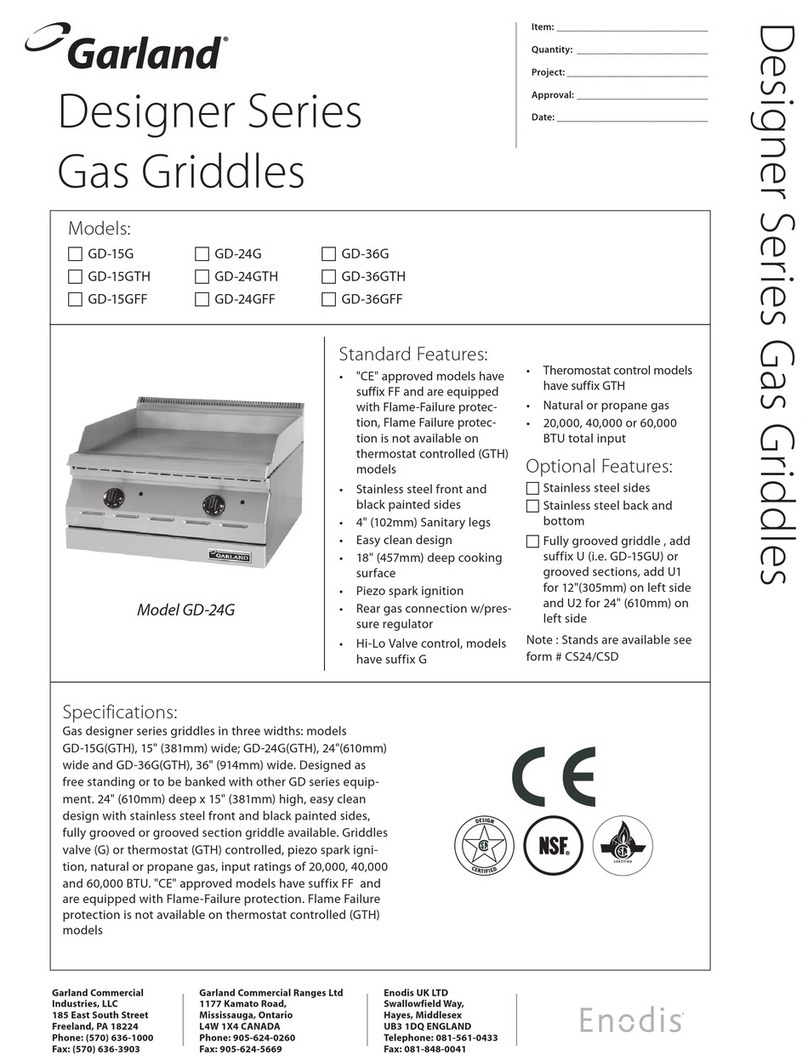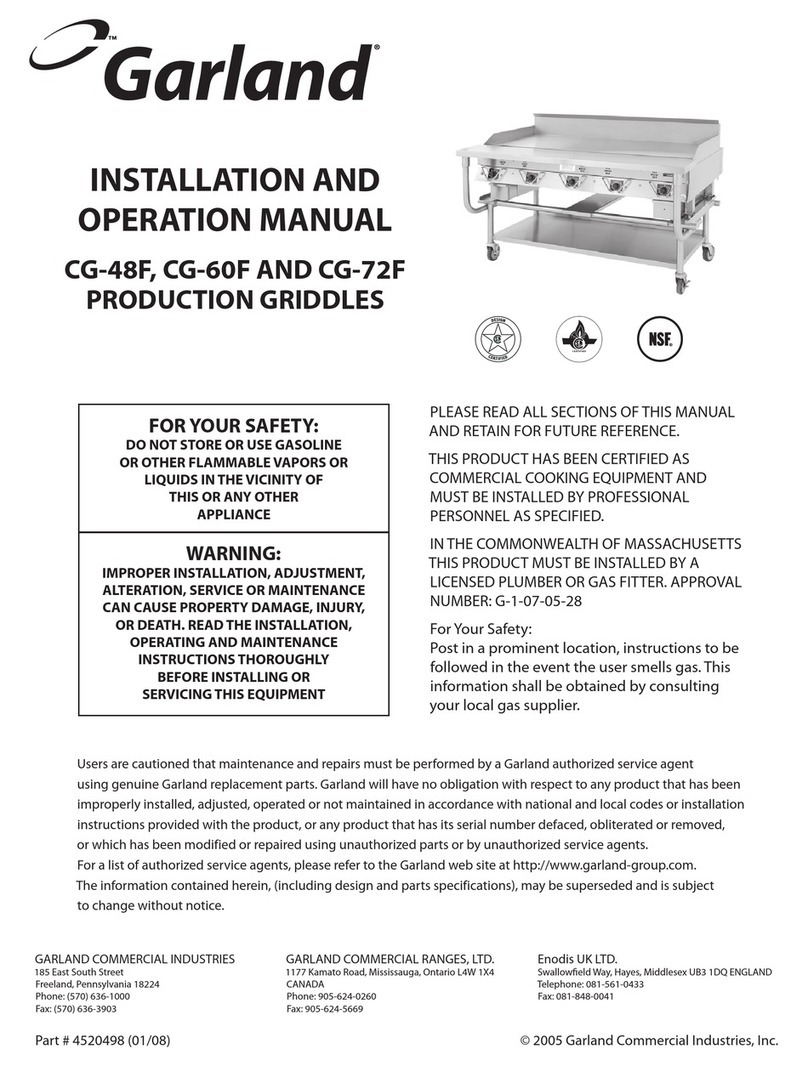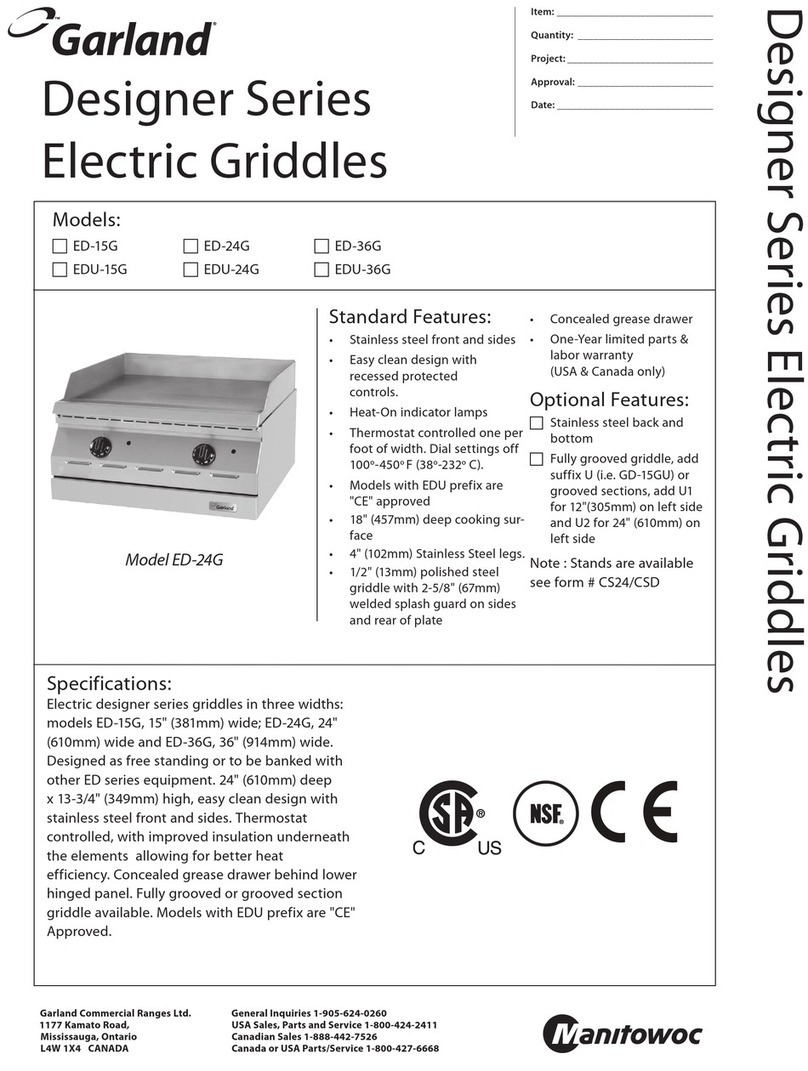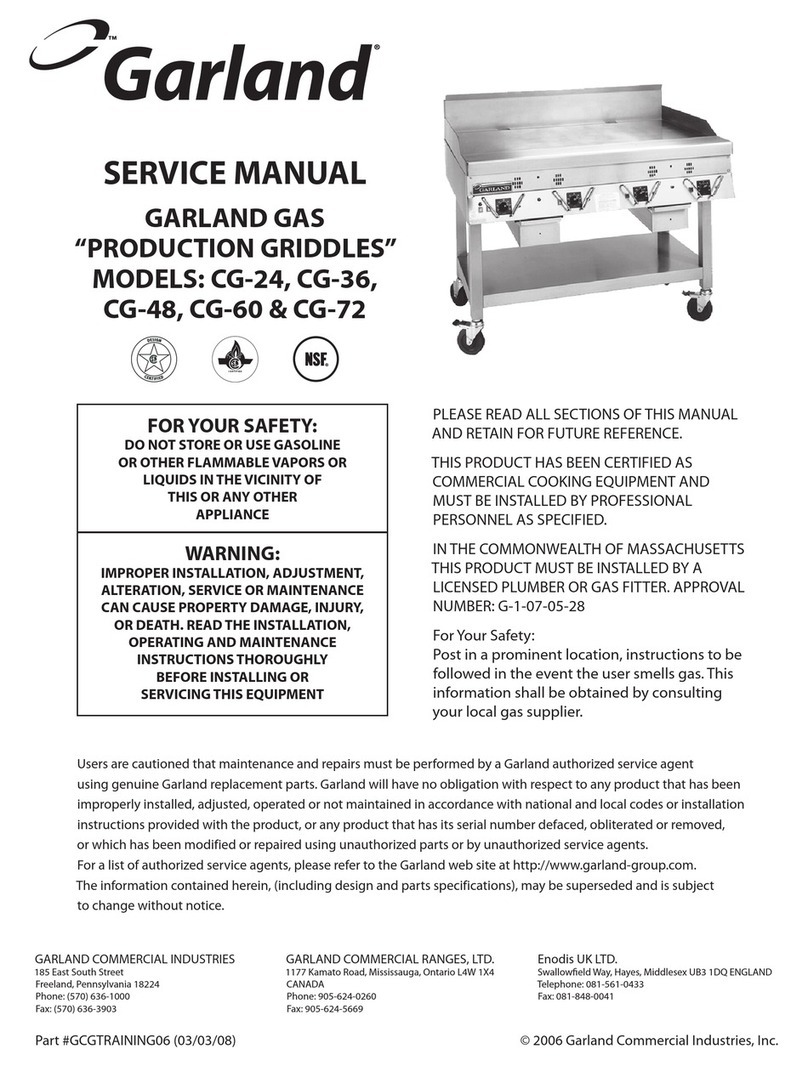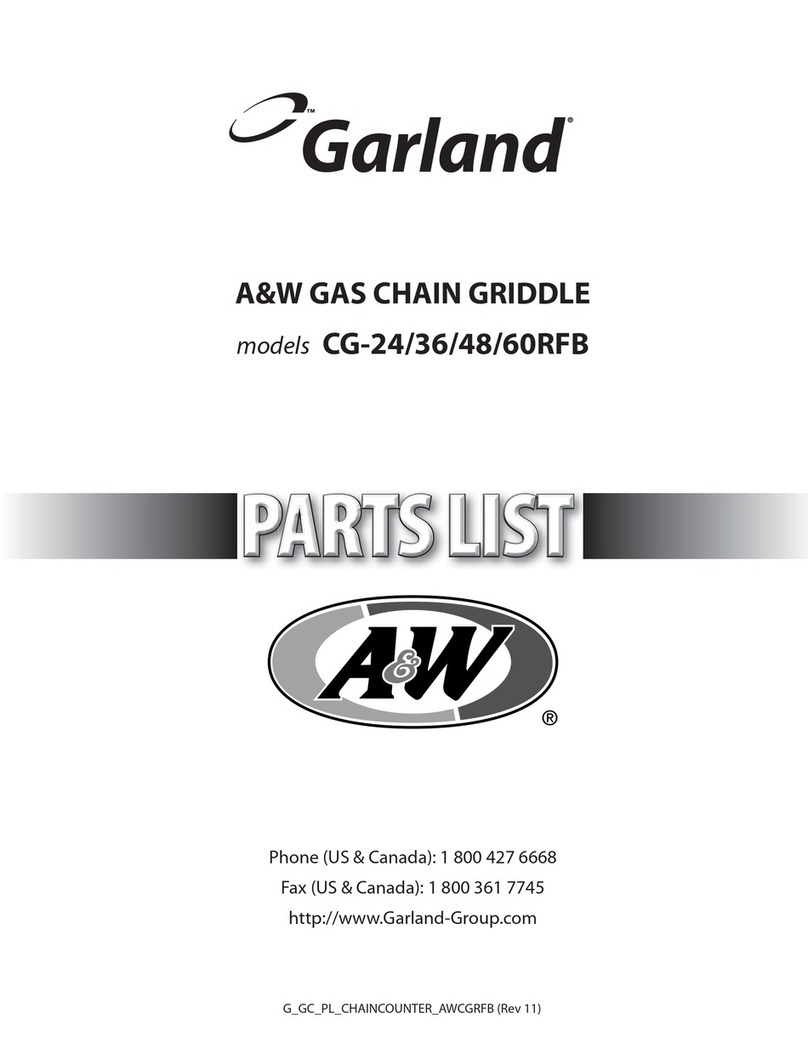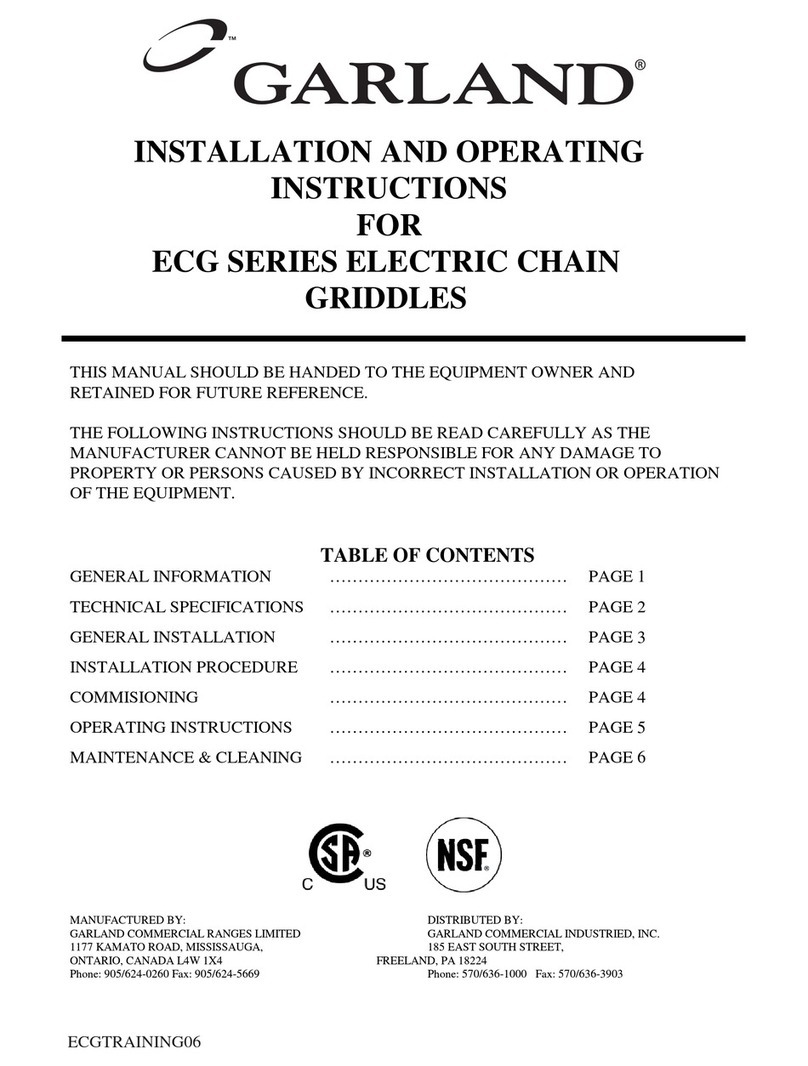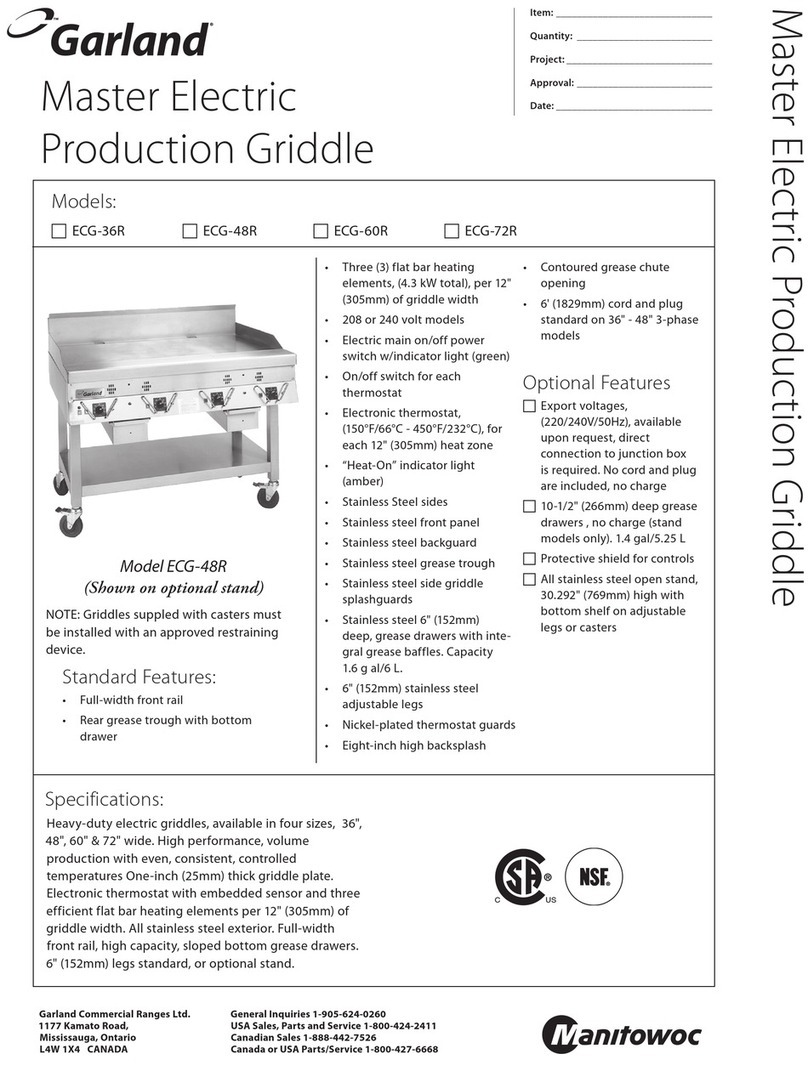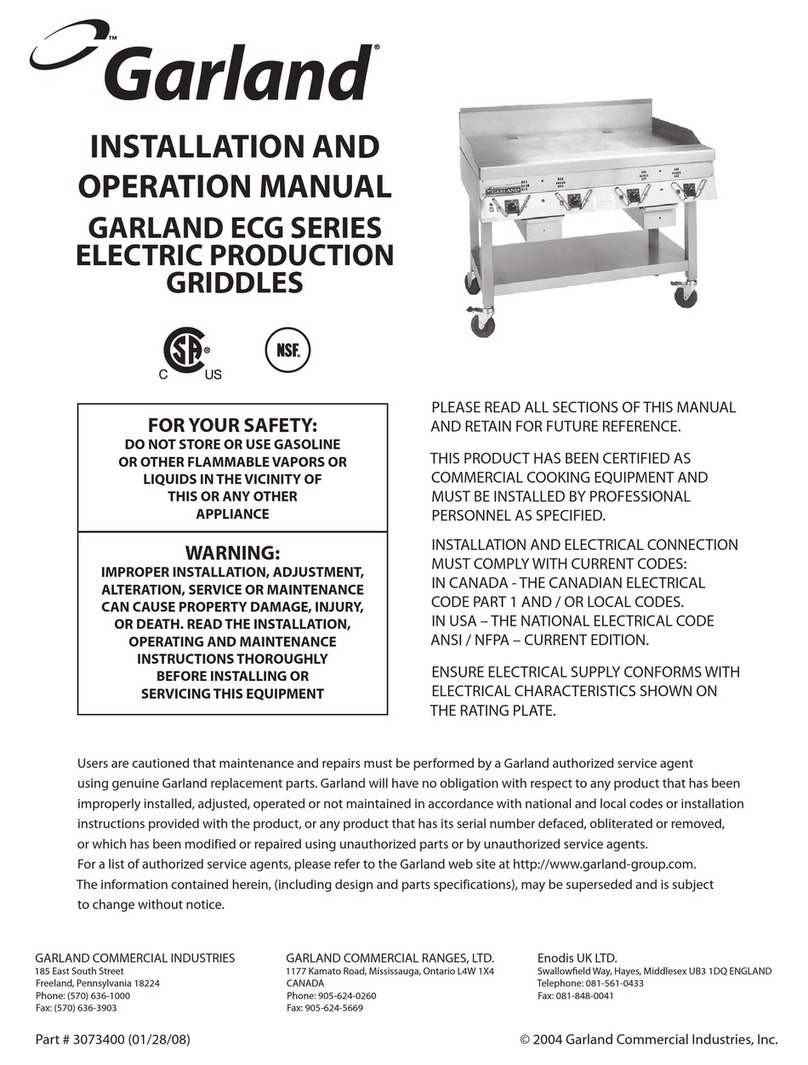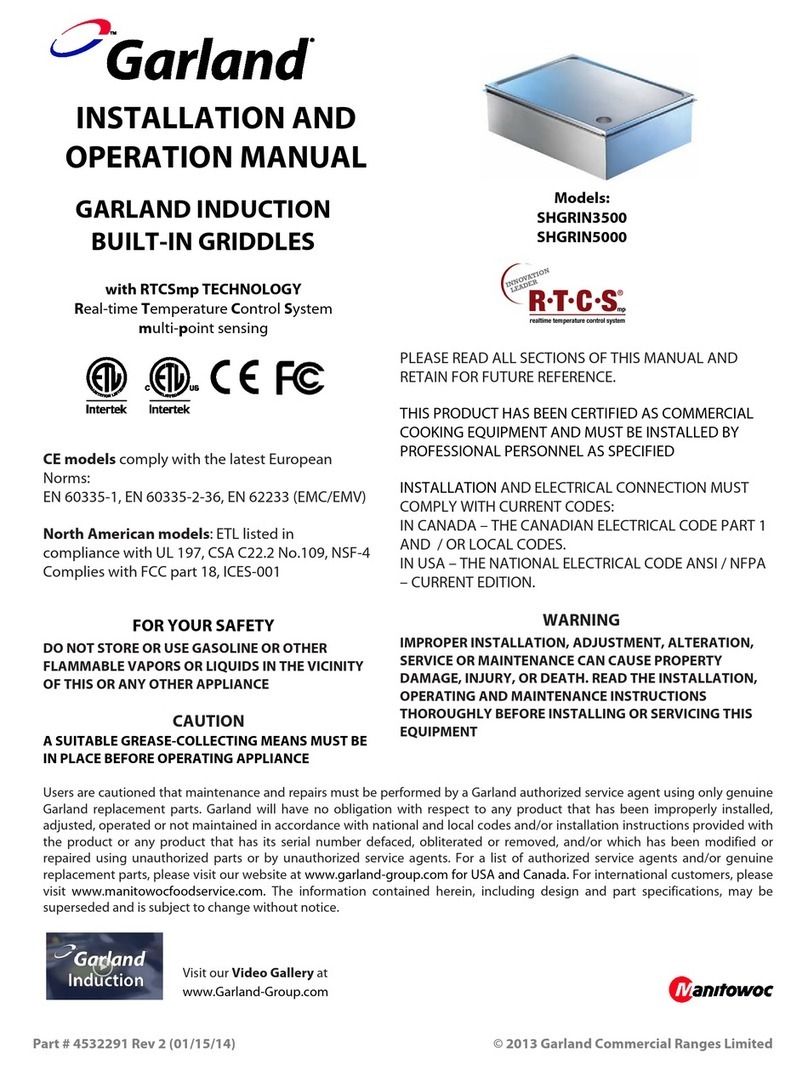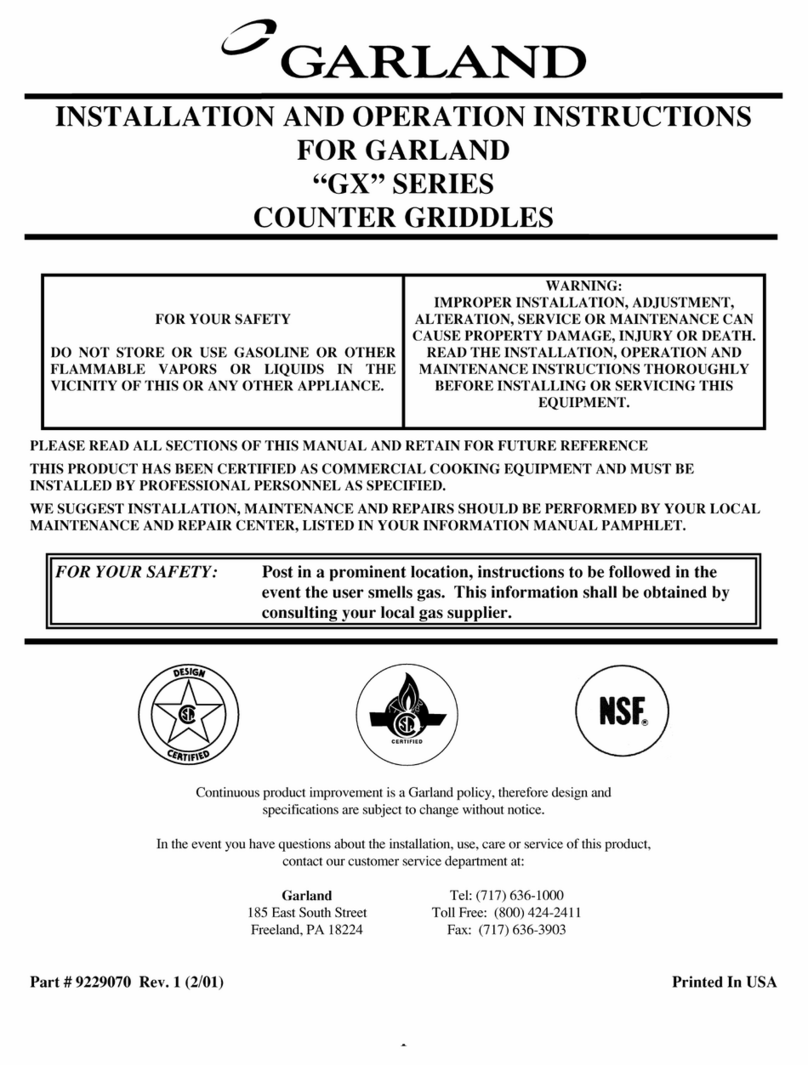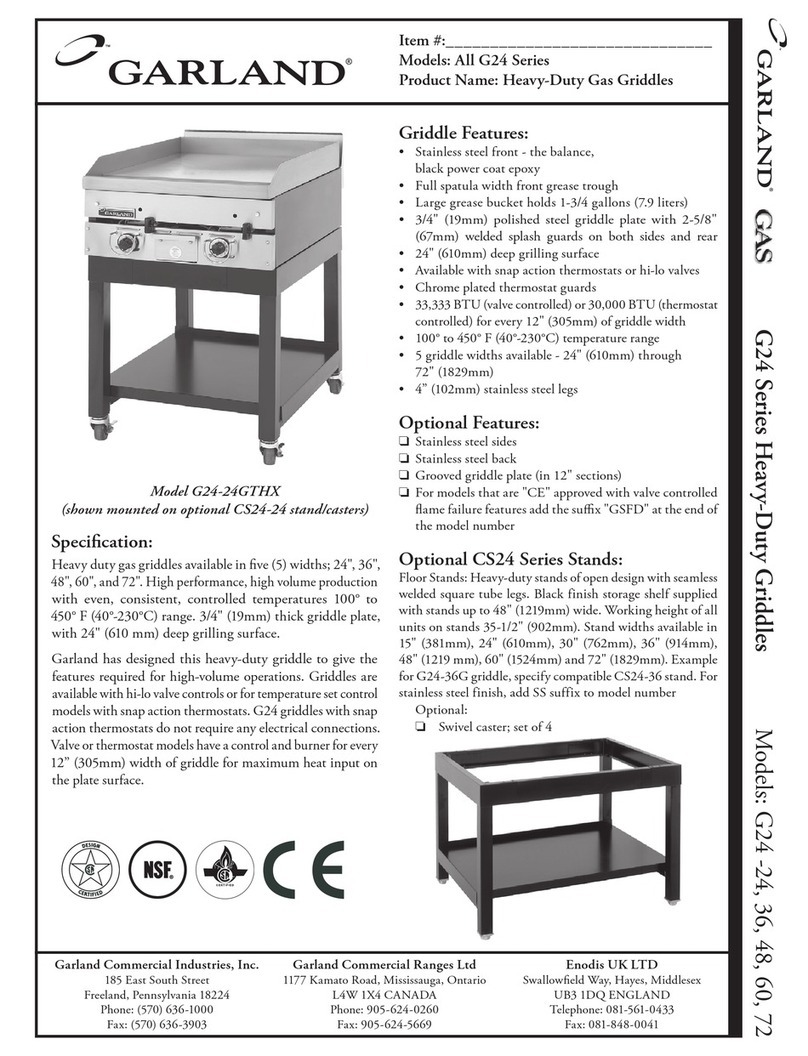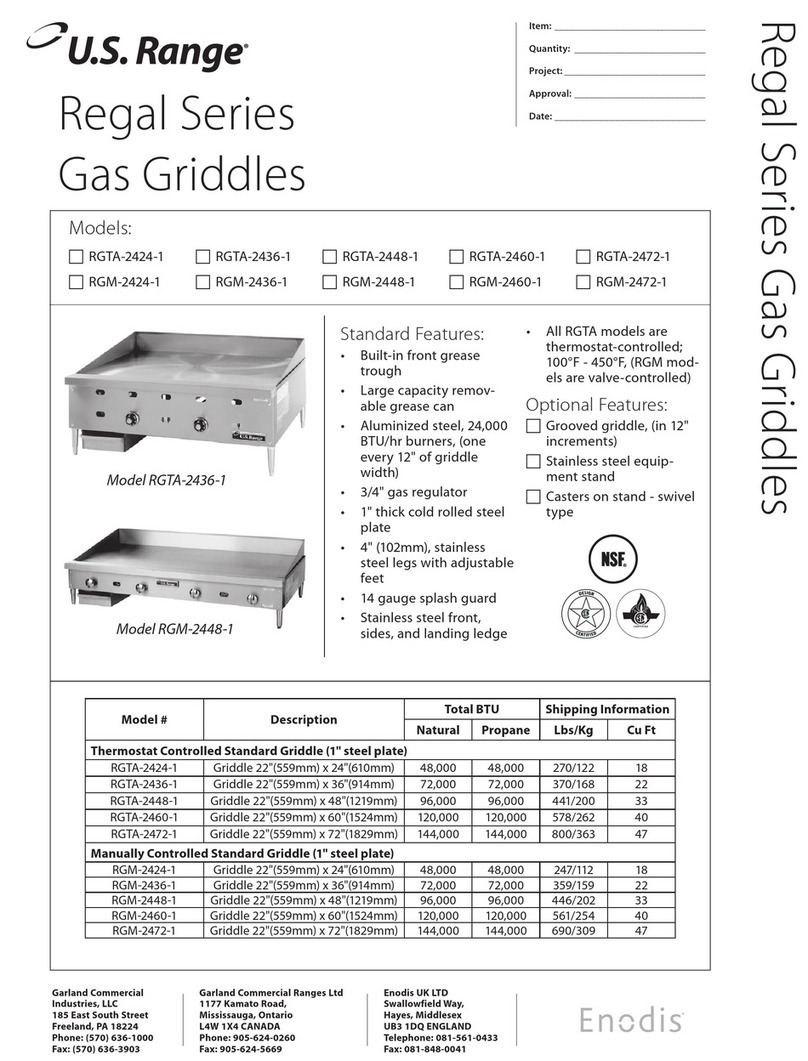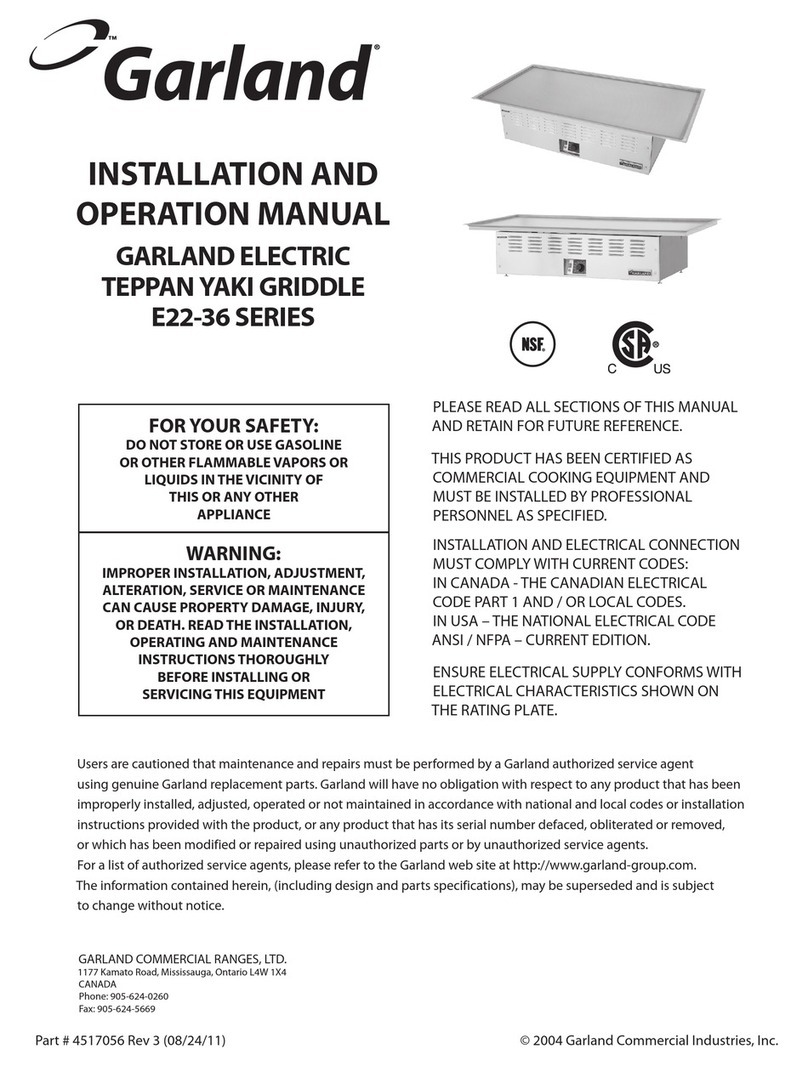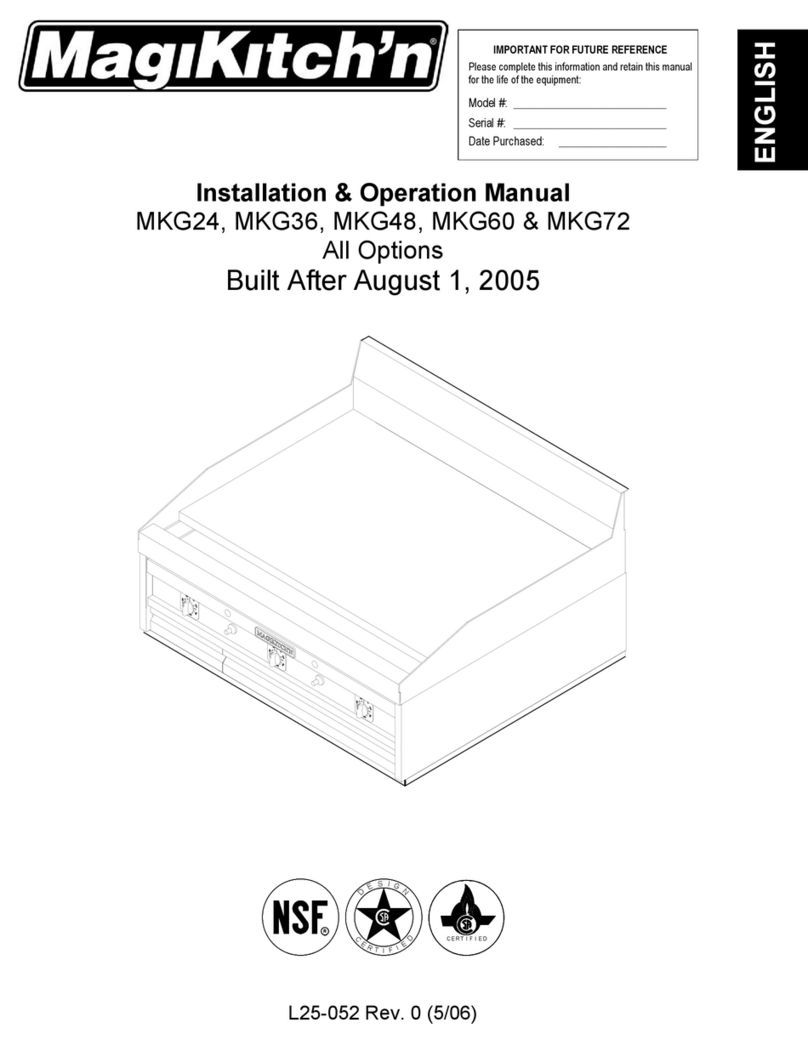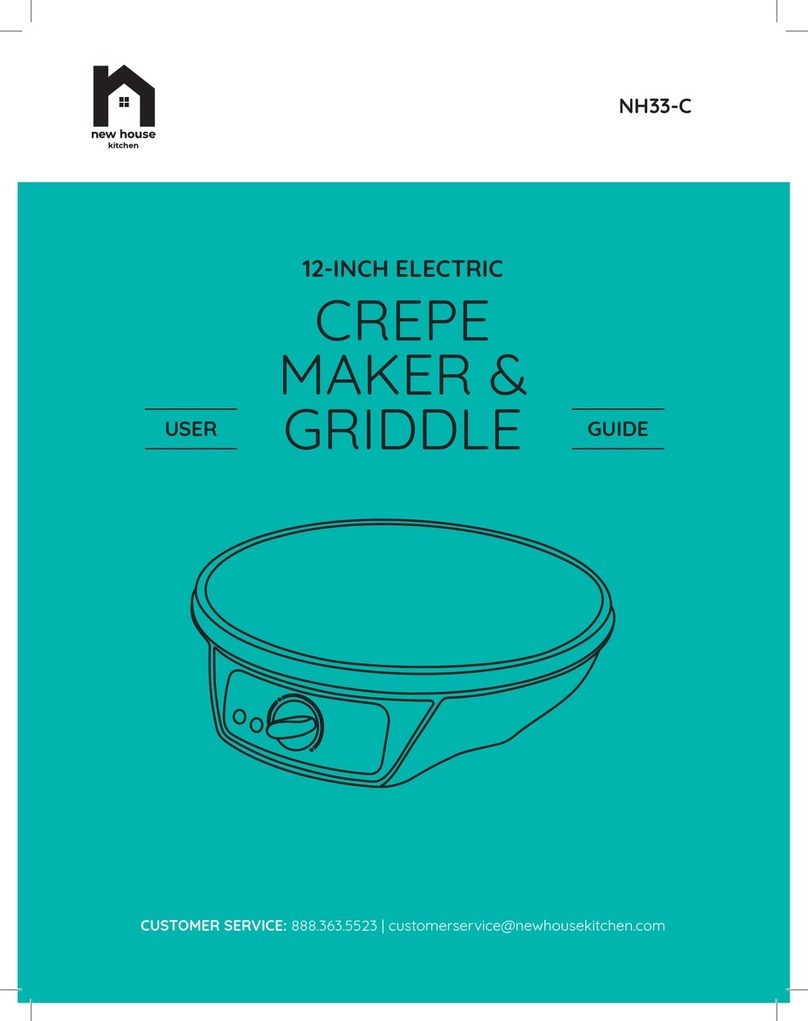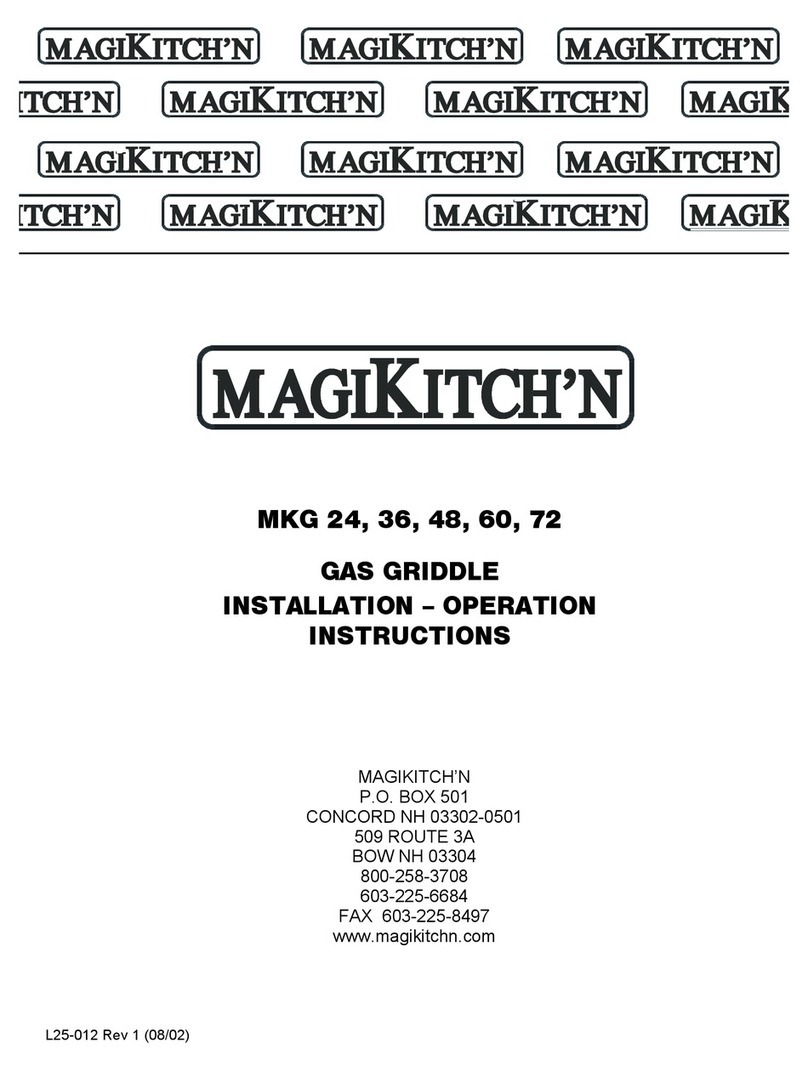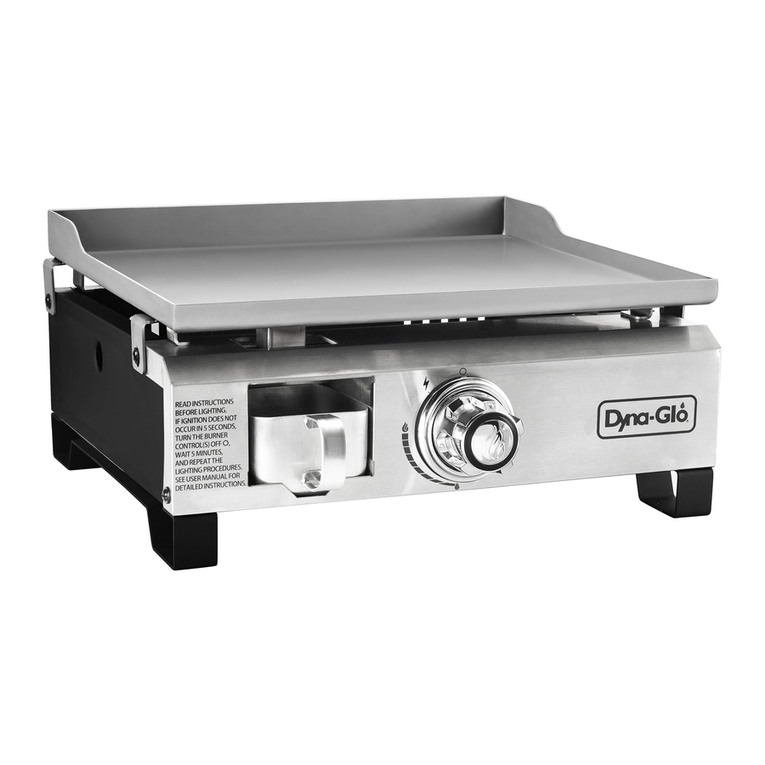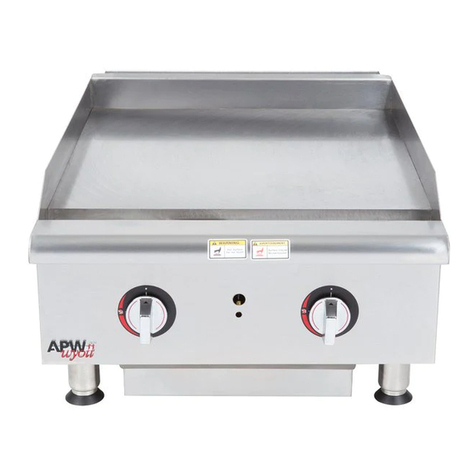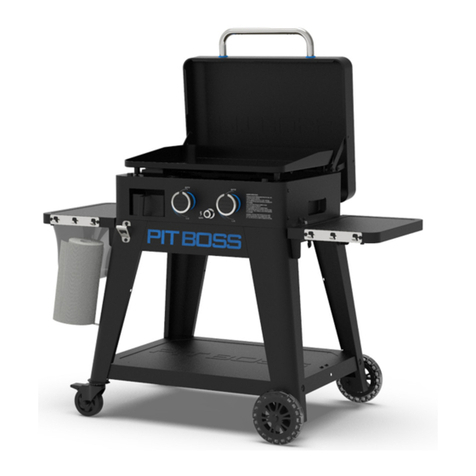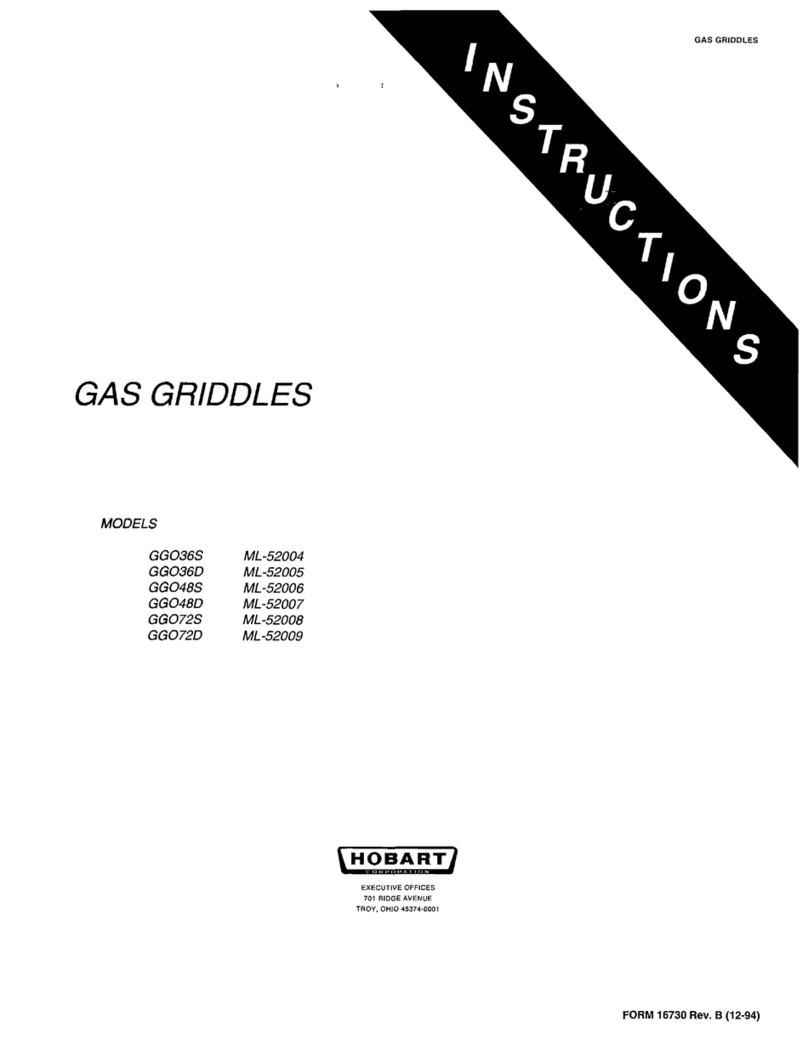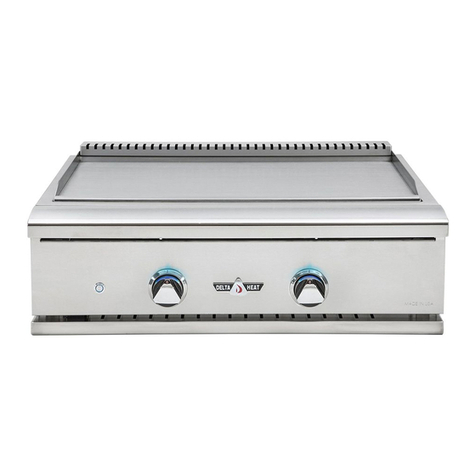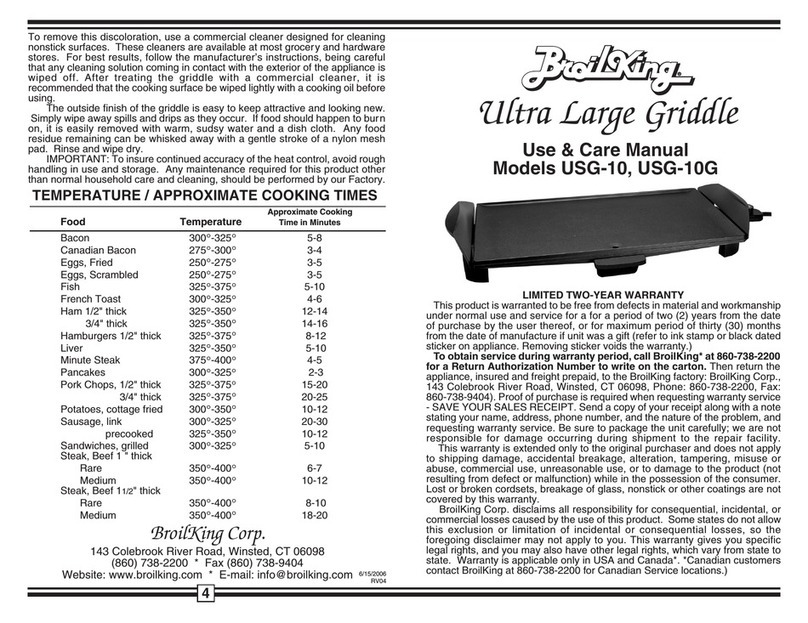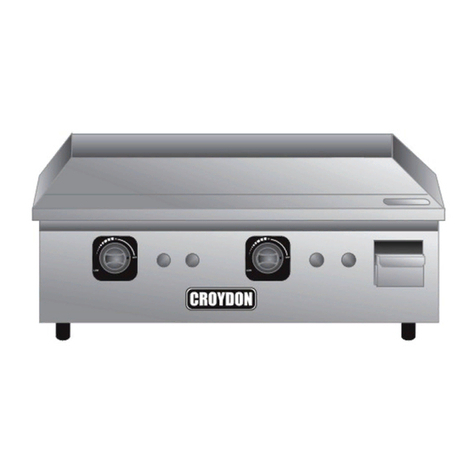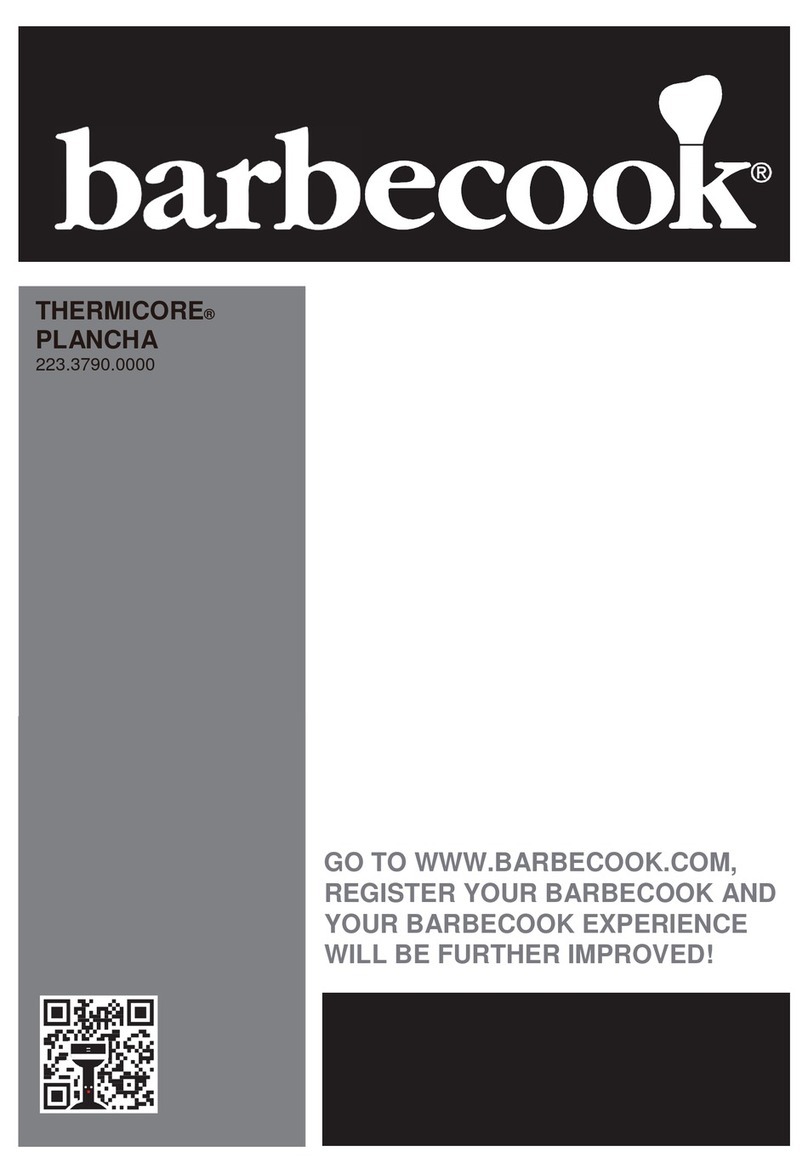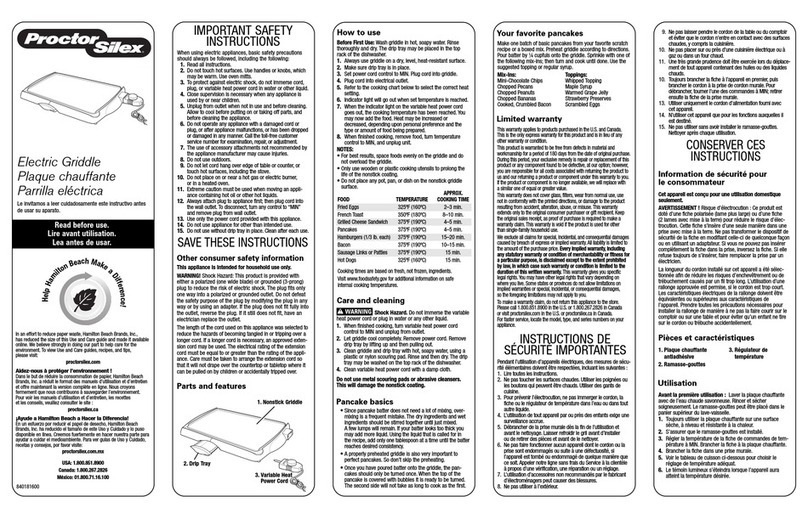
Part # 4521357 (12/07) Page 7
INTRODUCTION
IMPORTANT: The following instructions should be read
carefully as the manufacturer cannot be held responsible
for any damage to property, persons or animals caused by
incorrect installation or operation of the appliance.
You have purchased the nest commercial cooking
equipment available. Like any other ne, precision built
piece of equipment it should be given regular care and
maintenance.
Your new equipment must be installed and adjusted by a
competent person in accordance with the law. Failure to
install appliances correctly could lead to prosecution. It is in
your own interests and that of safety to ensure that the law is
complied with.
Your Garland dealer is well qualied to provide this service.
Periodic inspections by your dealer or qualied service
company are recommended to check temperatures, burner
adjustments and to ensure that moving parts are operative.
Whenever possible avoid overheating idle equipment as this
is the primary cause for increased service cost.
“Regular maintenance ensures peak performance.”
Uncrating
1. Check crate for possible damage sustained during transit.
Carefully remove unit from crate and again check for
damage. Any damage to the appliance must be reported
to the carrier immediately.
2. The wires for retaining the burners & other packing
material must be removed from unit. Any protective
material covering stainless steel parts must also be
removed.
3. The type of gas and the supply pressure that the
equipment was set up for at the factory is noted on the
data plate and on the packaging. This type of gas supply
must be used.
4. Do not remove permanently axed labels, warnings or
data plates from the appliance, for this may invalidate the
manufacturer’s warranty.
Product Application
Griddle tops are designed to have food cooked directly on
the surface. Do not put pots or pans on the griddle surface.
This will scratch or nick the surface and result in improper
cooking or sticking of the product. Never salt food over a
griddle since this will build up gummy residue making it
dicult to clean.
Avoid hitting the surface of the griddle with the edge of a
spatula since this will cause nicks. The most frequently used
temperature are 149°C to 177°C (300°F to 350°F). After one
ring the griddle plate will discolor. This is normal and will
not aect the performance.
NOTE: Many parts of the griddle are made from raw steel,
i.e., the griddle plate and can react with moisture forming
surface rust. This is normal and is not considered a defect.
Clean with a stainless steel or ber pad. A light coating of salt
free oil may be applied to prevent further rusting.
Optional Extras
• Counter Stand.
• Legs.
Rating Plate
The rating plate is readily accessible, located behind the
grease drawer. It contains all of the pertinent information
required by the installer.
In the event you have any questions concerning the
installation use care or service of this or any other Garland
product, write or call our Product Service Department. When
corresponding with the factory or your equipment dealer
regarding service problems or replacement parts, be sure
to refer to the particular unit by the correct model number,
including prex and sux letter and numbers and serial
number. The rating plate axed to the unit contains this
information.
For proper operation, the fuel information on the rating plate
of your new equipment must match you fuel supply.
